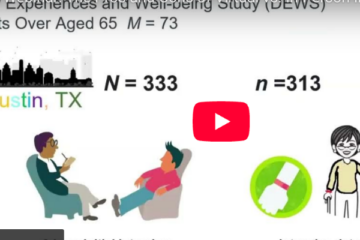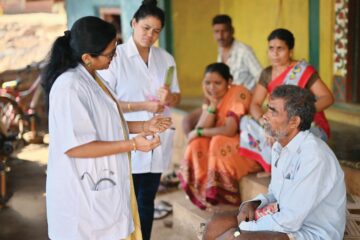
Injury and Violence: A Public Health Perspective
(December 1998) Injuries are a leading cause of death for people worldwide. Automobile crashes, homicides, suicides, and other sources of physical injury kill about 5 million people each year. They harm and disable millions of others and in so doing exact enormous psychological, social, and economic costs. Because injuries often strike down otherwise healthy children and young adults, they are a leading cause of premature death.
There is a growing awareness that injuries are predictable and preventable. Injuries can be predicted because they occur more often in some population groups than others. The injury death toll is highest among very young children, teenagers, young adults, and the elderly. It is higher among males than females, among the poor than the wealthy, and among people in some occupations, such as commercial fishing and construction. People who abuse alcohol and other drugs or have certain health problems are more likely to become injured than those without these problems.
Injuries are preventable. Injury control experts stress that “injuries are not accidents” and they have identified ways to avoid them. Injury prevention in the past several decades has shifted from trying to change individuals’ behavior to ensuring that the products people use and the environment in which they live and work are safe. Safety features introduced on the highways, in babies’ cribs, on children’s playgrounds, and at the workplace have extended thousands of lives.
Injury experts have demonstrated that even intentionally inflicted injuries like suicide and homicide are preventable through proven control measures. While the challenge is greater, many of the injuries and deaths from such human causes as war and terrorism and from such natural disasters as hurricanes, tornadoes, and earthquakes are also preventable.
This thinking runs counter to the common notions that unintentional injuries are random events over which individuals have no control or, alternatively, that people are at fault for their own injuries. The past two decades have witnessed an expansion in knowledge about preventing injuries. This revolutionary change in attitudes toward injury control and prevention is credited to one American scholar, William Haddon, Jr. Haddon perceived injury as a solvable problem and introduced practical ways to attack it. Talented and committed colleagues and successors have carried on Haddon’s work.
Because of Haddon and others, health experts in the United States and other countries have come to view injuries and violence as a public health problem similar to communicable diseases like AIDS and tuberculosis. The World Health Organization (WHO) has sponsored four international conferences on injury and violence since 1989. In the United States, the Centers for Disease Control and Prevention (CDC) has assumed the leadership in identifying, labeling, and confronting injury as a major public health problem. Initially, these scientific activities targeted unintentional injury, better known as “accidental injury.” But in 1985, then-U.S. Surgeon General C. Everett Koop asserted that intentional injury must not be confined to the domain of criminal justice. By the 1990s, most health scientists and public health leaders agreed that violence could be reduced with some of the same methods used to prevent unintentional injury. In 1996, WHO recommended that member countries treat violence as a public health matter.
This Population Bulletin examines the overlapping phenomena of injury and violence from a public health perspective. Epidemiology—the study of patterns of disease and injury—forms the core of this perspective, but many other disciplines also contribute. Engineering, biomechanics, ergonomics, demography, the biomedical sciences, and the social and behavioral sciences are all involved in the study of injuries and injury prevention. The Bulletin focuses on the United States, where scientists have forged many of the major breakthroughs in the epidemiologic study of injury and violence. But these principles may be applied universally.
Ian Rockett is professor of epidemiology at The University of Tennessee, Knoxville, where he is affiliated with the Exercise Science Unit and the Community Health Research Group.






